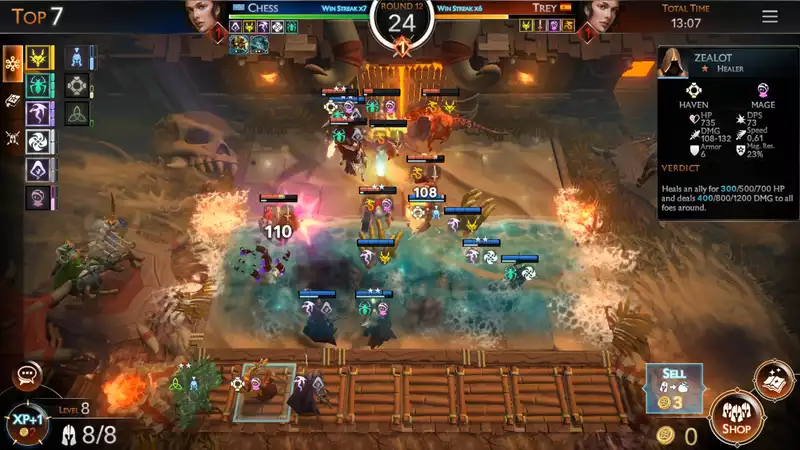At first glance, this feels like a game that should never have been made, an amalgamation of ideas and franchises that barely belong to the same publisher, let alone be drawn by the same studio. But for all that it seems like an affront to everything that led to the eventual creation of Might & Magic: Chess Royale, it is a refreshingly simplified version of an emerging genre.
In an effort to give a little legitimacy to a genre dominated by the fantasy creations of Blizzard, Valve, and Riot, "Chess Royale," which leans heavily on the "Might & Magic" franchise, takes a relatively unassuming autobattle game and turns it into as It incorporates a relatively unassuming autobattler game into the broadest possible battle royale framework and pits 100 players against each other for the top spot. Since other autochess-inspired games already use a last-player standing format, adding the word "royal" to the end of the title is not revolutionary, especially unless you see a battle bus or blue circle.
Nevertheless, adding 90+ new players to the prescribed scheme changes things a bit. Instead of the traditional health bar, Chess Royale gives players three lives. The first round is a freebie of sorts, giving them a risk-free opportunity to start building an army, but after that opening battle, each time they lose, they spend one life. When the life runs out, the avatars disappear, and the one-to-100 grid showing the progress of each game gradually turns black as more and more armies are defeated. This is a ruthlessly efficient means of thinning the field, and while you have the same amount of strength to lose, whether in a close game or an annihilation, you don't have the frustration of spending 30 minutes rolling for the one unit that might turn your fortunes around.
The result is an autobattler that is much faster than its competitors, despite the bloated player count. If you are familiar with the genre, much of your actual interaction with other players will remain the same. You start out with a couple of low-level units, which you place on the board and automatically play against other players' armies. Over time, gold and XP will be earned, which can be used to acquire new fighters or to level up existing units.
While other autobattlers have moments to catch their breath, there are no PvE or "carousel" rounds in Chess Royale, nor does it make economic sense. Building your own army also takes much less time than in other games. Synergies (groups of units with similar characteristics, such as mages, assassins, etc.) are much easier to establish than in Team Warfare Tactics because there are fewer of them to build. Items are replaced by spells that can be used by all players and can affect the entire board rather than specific units.
The UI is clearly designed with the mobile user in mind first. Buttons for using the store, unlocking spells, and leveling up are particularly prominent, and the lack of fine motor control with the mouse may have contributed to the choice of a very small playboard. Armies are arranged on a 3x8 grid, dramatically narrowing tactical depth by removing an entire row from the chessboard-style layout that gave the genre its name. Thanks to the introduction of several powerful units that provide important buffs to your closest allies, many of my most successful games have depended on my ability to get all of my fighters in the center of the board. Some loadouts required a bit more planning, but broadly speaking, once your army is in place, there is little need to move it, which is incongruous given the ever-evolving strategies of similar games.
The mobile interface also contributes little to the fantasy realm that underpins Chess Royale. Ubisoft has delivered in many weird and wonderful ways since acquiring the "Might & Magic" franchise in 2003, but this time it seems particularly tepid, as the 35-year-old series limits its main characters to static player avatars, Here they feel as if they are an afterthought. The units themselves are even more uninspired, with names like Vampire, Dryad, and a particularly complimentary Troglodyte. As these units level up, they all receive cosmetic upgrades, but they are so trivial that they are barely visible in battle. As a tie-in, it is quite cynical and offers little to the new game or its source material.
As a response to the hyper-complexity of the MOBAs that spawned Autobattler, the relative simplicity of the Autobattler genre seemed to accomplish all that was necessary. But Chess Royale emerged as a streamlined, fast-paced alternative, with each match ending in half the time I despair of the teamfighting tactic lineup. While my doting on Battle Royale is rarely talked about, the pick-up-and-play approach is a welcome change to a genre that was never meant to be actually played anyway.
.

Comments